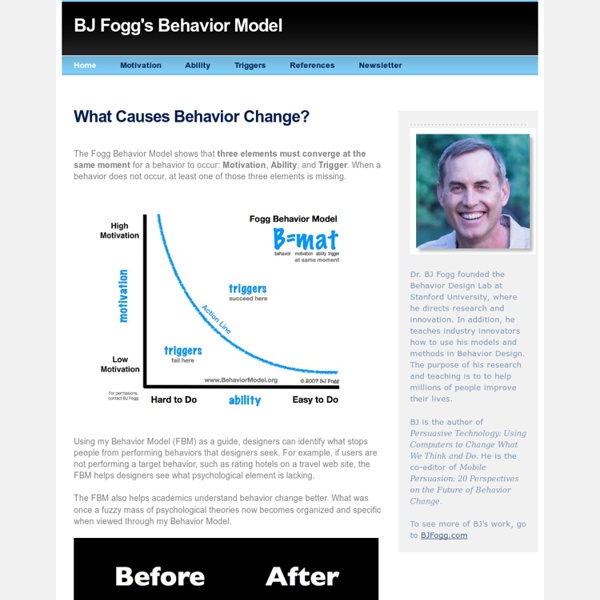



Blog | Usable Learning | Design for How People Learn So I’m really interested right now in how the brain operates as a prediction machine. Basically, one of our core brain functions seems to be guessing what is going to happen next. I think this has some really fascinating implications for behavior change. Humans are (in many ways) bad at risk prediction. Classic behaviors that are difficult to change include things like diet, exercise, smoking, texting while driving. Here are some interesting things I’ve been looking at regarding this: How your brain hallucinates your conscious reality by Anil Seth: How our brains use embodied simulation to construct meaning: (from Benjamin Bergen’s book Louder Than Words) How even the structure of our vision is structured around predicting the immediate future from Mark Changizi: Here’s a closer look at the image he is describing: Here’s a good talk on Risk Literacy from Gerd Gigerenzer:
The Rapid eLearning Blog - Practical, real-world tips for e-learning success. Creating great interactive learning experiences requires a few core building blocks: relevant content, pull versus push, and real-world decisions. With those building blocks you're able to structure effective learning scenarios that are meaningful to the learner and helps meet the objectives of the course. One of those building blocks in creating relevant content or content that is placed in a meaningful context. Read the full article After last week's post on the different drag & drop interaction examples, I had quite a few emails asking for tips on how to create drag and drop interactions for elearning. Sliders are used as a means to make adjustments/selections or as a simple way to navigate content. It helps to look at what others are doing to get ideas and inspiration for your own work. This week I'd like to feature a number of drag and drop interactions that people in the community have created over the past couple of years. But there were two things that I really liked about ...
Creating Communication | 21st Century Presentation and Communication Tips In Support of Excellence Powered by Translate DOWNLOAD THE LATEST VERSION: V4 published Mar 2015. This PDF Poster has links to 122 of the latest and most popular educational apps. I am still a little numb at the amazing interest in, and discussion about, the Padagogy Wheel from teachers and educators around the world. So why yet another version only one week later? Graduate Attributes and Capabilities: Without this your learning design will drift. These capabilities should be identified as part of our graduate attributes and woven into the fabric of our courses in the activity design. Please visit the blog post and listen to the podcast episode at: “If you exercise these capabilities.. you will be employed!” The Puzzle of Motivation: Teachers use the term engagement all the time. Dan Pink shows what science knows about motivation and what business does about it are largely mismatched. Dan expands on the concept of Autonomy.and introduces examples of three levels of application of this type of motivation.